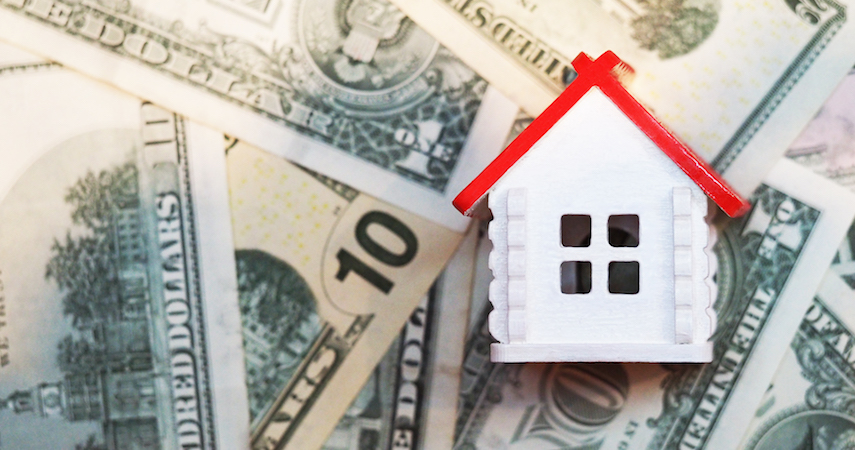How to Assess Home Value on Your Own Before You Sell

If you’re considering putting your home on the market, knowing how to assess home values on your own will help you as you begin the search for your new home. Many different factors play a role in the market value of your home, and it can be difficult to know where to start. While a real estate agent or appraiser will give you a more accurate home valuation, you can calculate a good estimation yourself first, so you know what you’re working with.
How to Assess Home Value on Your Own Before You Sell
Compare Recently Sold Properties
Other properties like yours in the same location that have recently sold can help you assess your home value on your own before you sell. No two homes are exactly alike, but similar features, amenities and location will be priced in similar ways. The more similar the homes are, the closer the selling prices will be. Realtors call these similar homes “comps.”
To assess your home value on your own before you sell, find three nearby properties that are most similar to yours and have been recently sold. Consider the features of the home, especially popular and high-value feature, the number of bedrooms and bathrooms, the lot size, and appearance of the home. If you can’t find homes that are exactly comparable, don’t worry; just get as close as you can. Then, average the sale prices of these homes. This is a good starting point for knowing how to assess home value on your own before you sell.
Get the information you need to assess your home value on your own before you sell.
Find Comparable Homes With Home Finder Pro
Make a List of Features
As you compare your homes to others nearby, you may notice your home has special features that other homes don’t, or you’re missing certain features that are common. Make a list of these as you notice them. This may include things like:
- New siding or roofing
- Additional bedrooms or bathrooms
- Hardwood floors vs carpeting
- New appliances
- A remodeled kitchen or bathroom
- A one- or two-car garage
- Central air
If your property doesn’t have features that are common in nearby homes, it isn’t necessarily cause for concern. These features might affect the list price somewhat, but the missing features might not be particularly important to some buyers.
Calculate the Value of Features
Now that you know how your home is different than your neighbors’, you can approximate the value of missing or special features and make corrections to the estimated assessed value of your home. This is not always straightforward, since the return on investment (ROI) of home improvements varies widely. But there are a few ways that you can make an estimation.
To approximate the value of particular features, look at homes that are otherwise comparable, but one has a feature that your home has or doesn’t have. Then, find the difference in sale price as a percent. For example, one home recently sold for $100,000, but it only has two bedrooms. A neighboring, very similar home sold for $110,000, and it has three bedrooms. $10,000 is 10% of the selling price of the first home, so you can reasonably estimate that having or not having a third bedroom will impact the value of your home by about 10%. To get a more accurate estimate, try this method two or three times. While the two example homes should be in the same general location as your home, other aspects can be different from yours, since you’re only looking at the value of this one feature as a percent.
You can also estimate the value of features you’ve added by approximate ROI. For example, replacing siding in the Midwest has an average ROI of about 73%. So, if your siding replacement job cost you $10,000, you can estimate the improvement to add $7,300 to your home. If your home exterior was especially worn-down, your ROI might be slightly higher. A few features will give you more than 100% ROI, meaning your home sale price will increase more than the amount you invested.
Double-Check Your Work
Now that you know how to assess your home value on your own before you sell, it’s a good idea to double-check your work with an outside source. Home valuation tools online will give you home valuation estimates based on historical data and trends, and this can help you get a more accurate estimation range. The accuracy of these home valuation tools can vary widely from region to region, so it’s best to look at more than one. With our home value estimator tool, you can get three estimates at once.
Compare these estimates against the assessed value you calculated on your own. If yours is significantly outside the estimates, look back at your work. Did you over- or underestimate the value of a particular feature? Were you comparing homes that are truly similar to yours at the start? If your own calculation is near these estimates, you’ll have a good range to work from. Remember that automated estimation tools generally don’t take recent updates and notable features into account, so your own estimate may be more accurate.
Before you sell your home, your real estate agent or appraiser will give you a more accurate home valuation. However, when you know how to assess your home value on your own, you’ll be able to begin your new home search with an accurate price range.

